I have been using named ranges in formulas for a long time in several different versions of Excel I use them to pull out selected information from a data page onto a report page In particular, I use a lot of "Countifs" such as "=Countifs(Site,SiteName,ReviewNum,"One",BMIYN,"Yes"), which tells me that for a given site, in the first reviewThis time the range is sorted by column B in ascending order Sub SortSingleColumn Range ("Sales")Sort Key1 = Range ("B1"), Order1 = xlAscending End Sub Extra Key and Order arguments can be added to sort by multiple columns In this example, the defined name Sales was used as the range The range is sorted by column D first in ascendingYou create named ranges in Excel by selecting a range of cells and then selecting Define Name on the Formulas tab Similar to named ranges, you can create an Excel table in Excel by selecting a range of cells, and then selecting Insert > Table When you connect to a named range or Excel table in Tableau, an icon appears next to the sheet in the Data Source page as shown below
1
Define name range in excel online
Define name range in excel online-Define names from a selected range Select the range you want to name, including the row or column labels Select Formulas > Create from Selection In the Create Names from Selection dialog box, designate the location that contains the labels by selecting the Top row,Left column, Bottom row, or Right column check box Select OKShortcut for Referencing Ranges ("Sheet2") implies that the object of the range is the worksheet Whenever Excel sees a period without an object reference directly to the left of it, it looks up the code for the closest With statement and uses that as the object reference as defined in Nevada law,




How To Create Named Range In Excel Office 365 Youtube
The Go to popup window shows named ranges on every worksheet in your workbook To go to a range of unnamed cells, press CtrlG, enter the range in the Reference box, and then press Enter (or click OK ) The Go to box keeps track of ranges as you enter them, and you can return to any of them by doubleclickingIn the 'Create Named from Selection' dialog box, check the Top row option and uncheck all the others Doing this creates 2 names ranges ('Fruits' and 'Vegetables') Fruits named range refers to all the fruits in the list and Vegetables named range refers to all the vegetables in the list Click OKIn Excel, you can name cells and cell ranges, and use those names in formulas This is a useful feature that makes formulas easier to understand and maintain
Create named ranges Now, create two named ranges Select cell C2 (the file name) and create a named range called FileName To do this type the name of the named range into the name box and press Enter Next, we repeat the step above for the file path Select cell C3 (the file path) and create a named range called FilePathYou can also create Range names using the Create Names from the Selection dialog box from Formulas tab, when you have Text values that are adjacent to your range Step 1 − Select the range for which you want to define a name along with the row / column that contains the name Step 2 − Click the Formulas tab With the range of cells I want to include in the named range selected, I right click and choose Define Name Name the range of cells Because I had no header row, the name is currently blank Name the Range With the region still highlighted, I'll name the range InterfaceCourses and click OK Click File Save and Send
However, it works in Excel named ranges See Also Know more about GETCELL function Here are the three steps to use GETCELL to count colored cells in Excel Create a Named Range using GETCELL function; A range is a group of contiguous cells in the workbook Scripts typically use A1style notation (eg, for the single cell in column B and row 3 or C2F4 for the cells from columns C through F and rows 2 through 4) to define ranges Ranges have three core properties values, formulas, and format Most users learn about named ranges early onit's a name applied to a cell or a range of cells Most of us use them in expressions, but
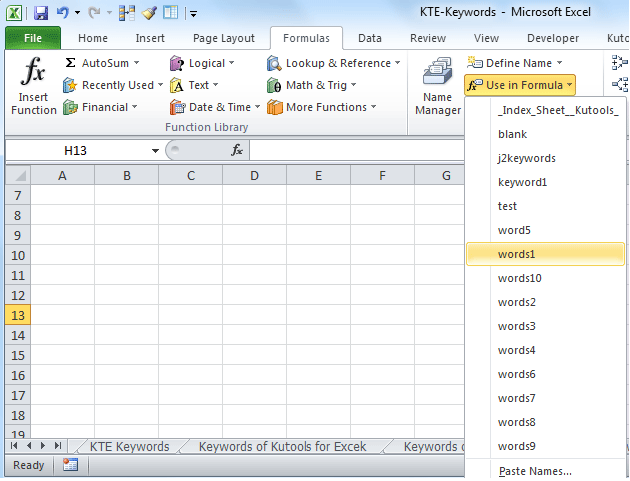



How To List Named Ranges In Excel



Master Range Names In Excel Online Tutorial Excel Launchpad
On the Formula tab, in the Defined Names group, click Define Name Or, press Ctrl F3 to open the Excel Name Manger, and click the New button In the Name box, type the name for your dynamic range In the Scope dropdown, set the name's scope Workbook (default) is recommended in most casesType a name in the Name field (Excel can display the name if you selected a data range with a heading line) The active or selected cell or range address appears in the box labeled Refers toVerify that the address listed is correct and then click OK to add the name to your spreadsheet and close the dialog box Note A faster way to create a name is to use the Name box (to the leftSpireXLS can meet your need here in dealing with named ranges SpireXLS can create a named range, edit a named range and use named ranges in formulas In this article, we will introduce you how to create and apply named ranges through C# code Call the method Add to create a new named range The parameter NewNamedRange is the name of the named range
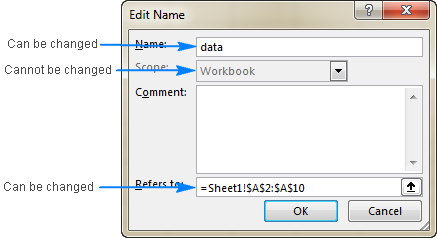



Excel Names And Named Ranges How To Define And Use In Formulas
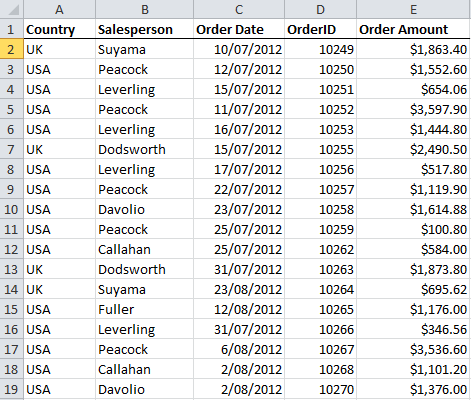



Excel Dynamic Named Ranges My Online Training Hub
Excel name types In Microsoft Excel, you can create and use two types of names Defined name a name that refers to a single cell, range of cells, constant value, or formula For example, when you define a name for a range of cells, it's called a Named ranges can speed up formulas, macros and more Rob Schultz Working with ranges in Excel is a fast and simple way to identify, define, or refer to aMethod #1 – Using Define Name Here are the steps to create Named Ranges in Excel using Define Name Select the range for which you want to create a Named Range in Excel Go to Formulas –> Define Name In the New Name dialogue box, type the




Creating And Using Named Ranges Microsoft Excel 365
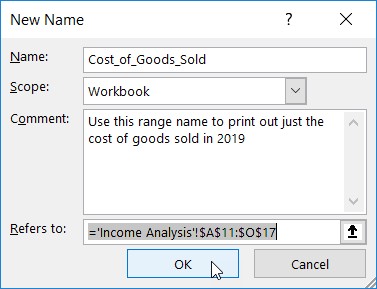



Excel Ranges Naming Your Cells In Excel 19 Dummies
Array Names and Matrix Functions in Microsoft Excel ® This is a demonstration of a convenient feature of the Excel spreadsheet that is not well documented in the online help files Although this illustration is taken from Excel02 for Windows XP Office, a similar procedure should work in earlier versions of Excel, back to 1997 at least Jump to Any Cell / Worksheet using Name Box If you want to quickly jump to a named range or another worksheet, here is a quick trick Just enter that name or address in the name box (topleft corner, next to formula bar) And bingo, you are on the target cell or sheet WebExcel isn't the same as client Excel (as you've noted), so some functionality isn't there (yet) The name box is one of those things You cannot define range names in web excel But you can press controlg to goto names




How To Create Named Ranges In Excel A Step By Step Guide



1
You can also define your data as a database and create defined names for each chart data series To use this method, follow these steps In a new worksheet, type the following data A1 Month B1 Sales Jan B2 10 A3 Feb Mar B4 30 Select the range A1B4, and then click Set Database on the Data menu On the Formula menu, click Define Name In the Name box, typeIn the code above, you first open the spreadsheet samplexlsx using load_workbook(), and then you can use workbooksheetnames to see all the sheets you have available to work with After that, workbookactive selects the first available sheet and, in this case, you can see that it selects Sheet 1 automatically Using these methods is the default way of opening a spreadsheet, and you'll see Worksheets(1)Range("Criteria")ClearContents Use Cells on a worksheet to obtain a range consisting all single cells on the worksheet You can access single cells via Item(row, column), where row is the row index and column is the column indexItem can be omitted since the call is forwarded to it by the default member of RangeThe following example sets the value of
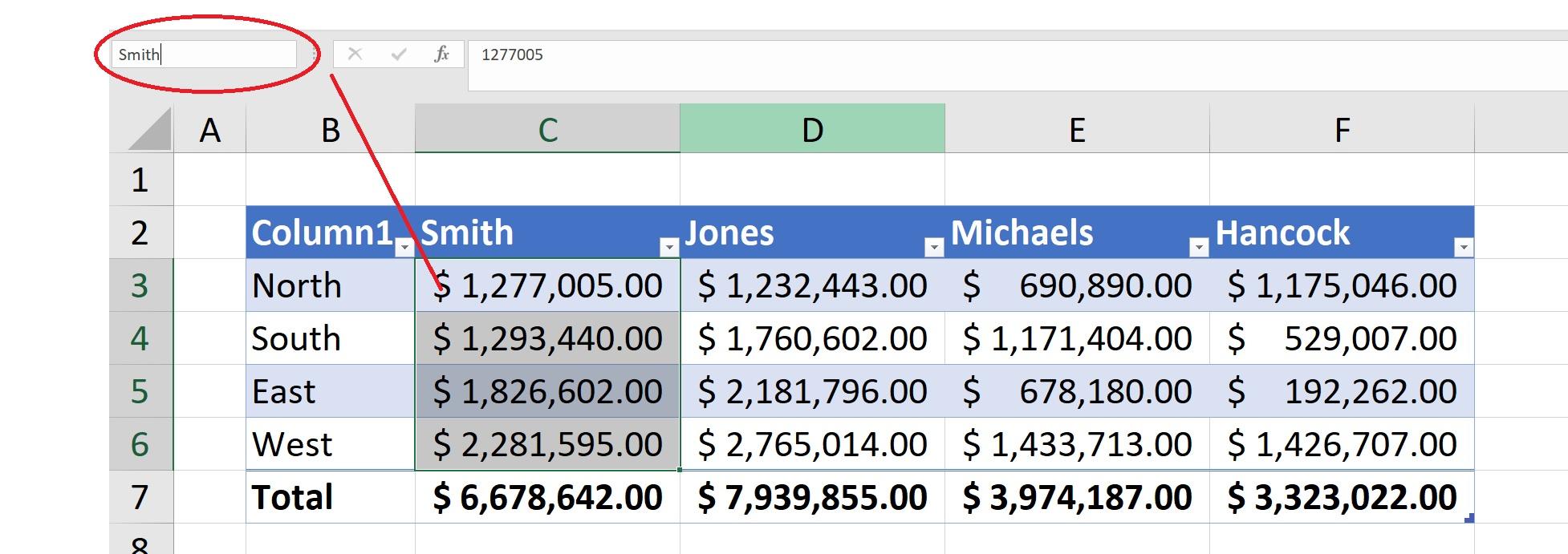



How To Use Named Ranges To Quickly Navigate An Excel Workbook Techrepublic



1
When Excel files get larger and complex over the years, named ranges tend to get lost in translation Many times, these files become slow to open, save and update because these named ranges becomeUsing the Color Number to Count the number of Colored Cells (by color) STEP 1 Let us create our first Named Range Highlight the USD Amounts and type in the Name Box a name Amounts Make sure that there are no spaces Press Enter Let us do the same to our Euro Exchange Rate Highlight the exchange rate, and type in the Name Box a name EuroRate Press Enter STEP 2 Let us see our Named Ranges in action!
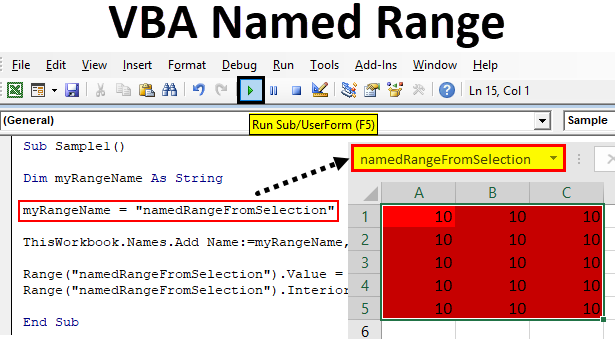



Vba Named Range How To Use Vba Named Range In Excel Vba




All About Excel Named Ranges Excel Range Name
Name a range Open a spreadsheet in Google Sheets Select the cells you want to name Click Data Named ranges A menu will open on the right Tip To quickly open this menu, in the range box on the top left, click the drop down menu > Manage named ranges Type the range name you want To change the range, click Spreadsheet This looks very simple, but I can't find how to do it I'm trying to name a range in Excel (just as I would do in the classical Excel software), so that I can embed this range in a web page later (using &Item=Range_Name as &Item='Feuil1'!A1D14 does not seem to work) Thanks for your help!On the Formulas tab, in the Defined Names group, click Define Name In the New Name dialog box, in the Name box, type the name you want to use for your reference Note Names can be up to 255 characters in length



Name




Create A Named Range In Excel Myexcelonline
Cell Range — A Cell range is a collection of cells that have been identified as a group based on a variety of criteria By using a colon () between cell references, Excel can determine the4 Select the range, type the name in the Name box and press Enter 5 Now you can use this named range in your formulas For example, sum Prices To create a named constant, execute the following steps 6 On the Formulas tab, in the Defined Names group, click Define Name 7 Enter a name, type a value, and click OK 8Define a name that contains an external reference to cells in another workbook Open the destination workbook and the source workbook In the destination workbook, Go to Formulas > Defined Names > Define Name In the New Name dialog box, in the Name box, type a
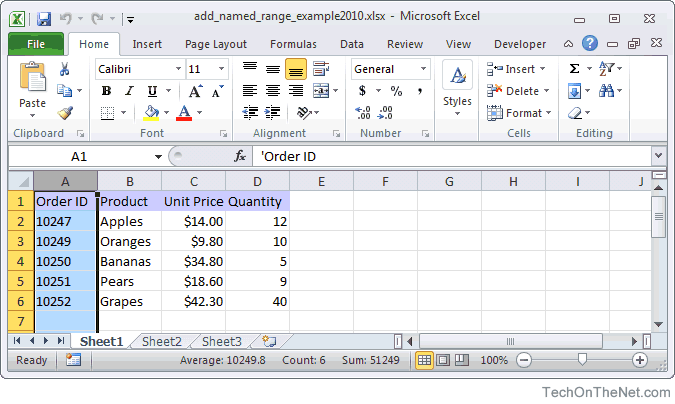



Ms Excel 10 Add A Named Range




Create A Named Range In Excel Myexcelonline
In that case, consider building a dynamic named range with the INDEX function instead In the example shown, the formula used for the dynamic range is = OFFSET( B5,0,0,COUNTA( $B$5$B$100 ),COUNTA( $B$4$Z$4 )) Note this formula is meant to define a named range that can be used in other formulasWorking with Cell Notation XlsxWriter supports two forms of notation to designate the position of cells Rowcolumn notation and A1 notation Rowcolumn notation uses a zero based index for both row and column while A1 notation uses the standard Excel alphanumeric sequence of column letter and 1based rowAdding/deleting a data point would automatically update these named ranges Insert a chart that uses the named ranges as a data source Let me explain each step in detail now Step 1 – Creating Dynamic Named Ranges Below are the steps to create dynamic named ranges Go to the 'Formulas' Tab Click on 'Name Manager'




How To Create Named Ranges In Excel A Step By Step Guide




How To Create Named Ranges In Excel A Step By Step Guide
Use the Named Range to get color code in a column; In the Defined Names group, click Name Manager Click New In the Name box, type Date In the Refers to box, type the following text, and then click OK =OFFSET($A$2,0,0,COUNTA($A$2$A$0),1) Click New In the Name box, type Sales In the Refers to box, type the following text, and then click OKThis thread is locked




The Vba Guide To Named Ranges Thespreadsheetguru
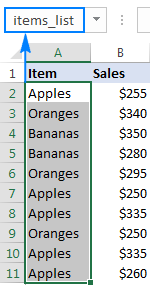



Excel Names And Named Ranges How To Define And Use In Formulas
Create a Named Range by using the Define Name option First, focus on the cells by selecting the range of cells Now, navigate to the Formulas tab Next, go to the Defined Name group Click to select Define Name Now once the New Name dialog box opens, mention three things Name, Scope, CommentIn this video of this Free online Excel Training, I will cover all that you need to know about Named Ranges in ExcelNamed Range as the name suggests isIf you want to refer a regular range or a named range declared on specific sheet, though =WorkbookNameSheetName!Range It also seems, like quotes or anything like that to manage spaces may be required only in Excel's cells, that is in UI (and may be locale specific, since on my PC works without quotes, but at work quotes are required
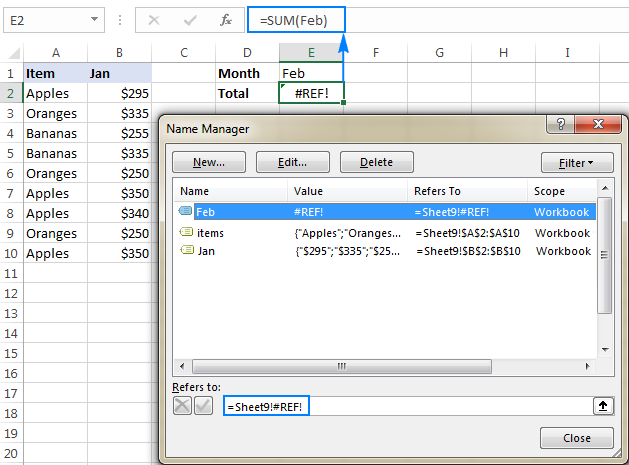



Excel Names And Named Ranges How To Define And Use In Formulas




How To Create Named Ranges To Use In Excel Formulas Youtube
Excel uses the column heading (cell B1) to name the series) In the resulting dialog, enter a reference to Smith's dynamic range in the Series Values control In this case, that's =DynamicChart1 Making sense of dollar signs in Excel By Steven Thomas We've noticed some of you searching for help using "$" – a dollar sign In Excel, a dollar sign can denote a currency format, but it has another common use indicating absolute cell references in formulas Let's consider both uses of the dollar sign in Excel Named ranges You cannot create named ranges in Excel for the web, but you can use the named ranges that you created in Excel desktop in your spreadsheet in Excel for the web When you select a named range, the name appears just before the formula bar




No Name Manager In Excel Online Microsoft Tech Community
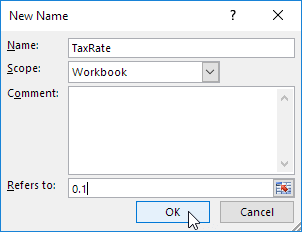



Create A Named Range In Excel Easy Excel Tutorial
Create a named range from selected cells in a worksheet Select the range you want to name, including the row or column labels Click Formulas > Create from Selection In the Create Names from Selection dialog box, select the checkbox (es) depending on the location of your row/column header If you




How To Create Named Ranges In Excel A Step By Step Guide
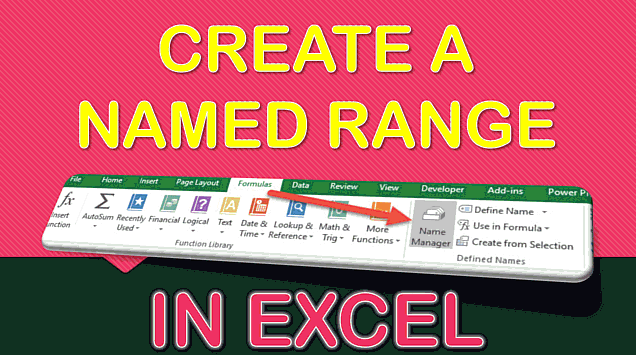



Create A Named Range In Excel Myexcelonline




No Name Manager In Excel Online Microsoft Tech Community




How To Use Named Ranges To Quickly Navigate An Excel Workbook Techrepublic




How To Quickly Delete All Named Ranges In Excel




Step By Step How To Use Named Ranges In Excel With Practice Workbook
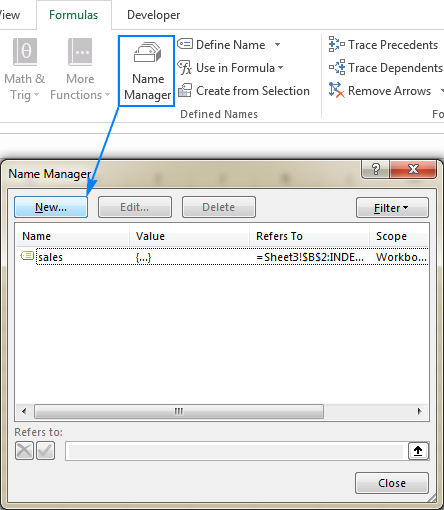



Excel Names And Named Ranges How To Define And Use In Formulas
/ContigousRanges-5bf433bd46e0fb0026fad75a.jpg)



Range Definition And Use In Excel Worksheets




How To Create Named Range In Excel Office 365 Youtube




How To Create Named Ranges In Excel A Step By Step Guide




No Name Manager In Excel Online Microsoft Tech Community
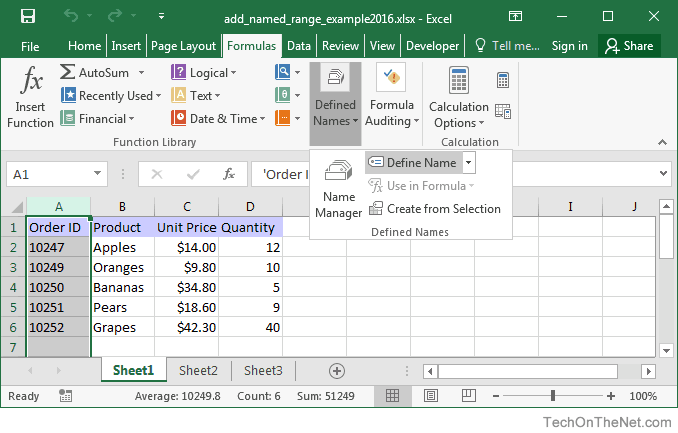



Ms Excel 16 Add A Named Range




All About Excel Named Ranges Excel Range Name
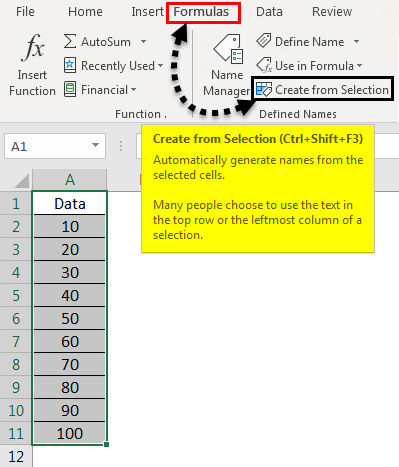



Named Range In Excel How To Create Named Range In Excel




Microsoft Excel Create An Automated List Of Worksheet Names Journal Of Accountancy
:max_bytes(150000):strip_icc()/NameBox-5be366ed46e0fb00519ef15a.jpg)



How To Define And Edit A Named Range In Excel



How To Define And Edit A Named Range In Excel
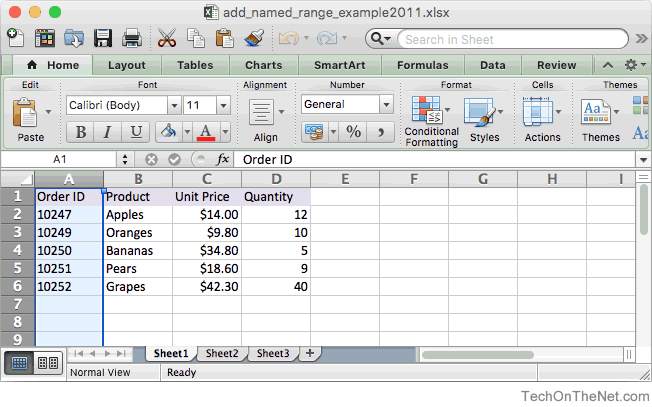



Ms Excel 11 For Mac Add A Named Range




How To Create Named Ranges In Excel A Step By Step Guide




How To Create And Use Excel Named Ranges
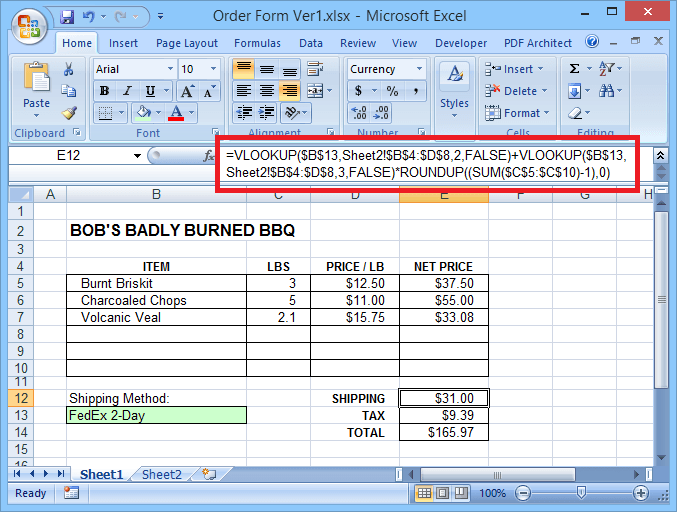



Why You Should Be Using Named Ranges In Excel




Excel Tutorial Shortcuts For Named Ranges
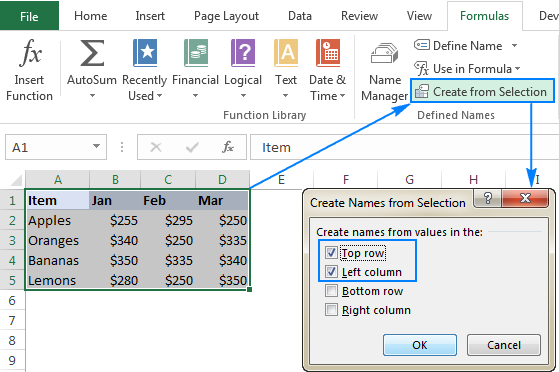



Excel Names And Named Ranges How To Define And Use In Formulas
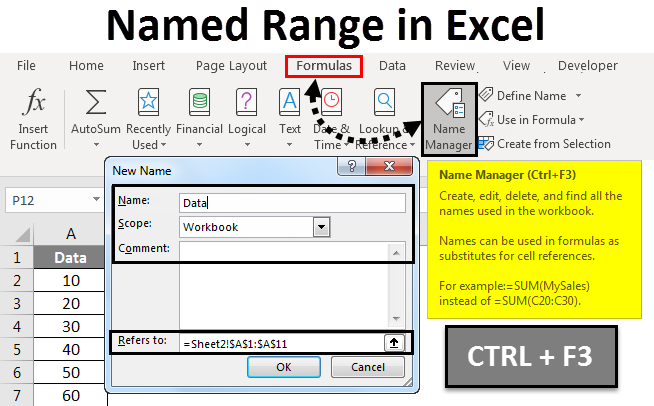



Named Range In Excel How To Create Named Range In Excel




How To Create Named Ranges In Excel A Step By Step Guide




Microsoft Excel Create An Automated List Of Worksheet Names Journal Of Accountancy




Use The Name Manager In Excel




Create A Named Range In Excel Myexcelonline




All About Excel Named Ranges Excel Range Name
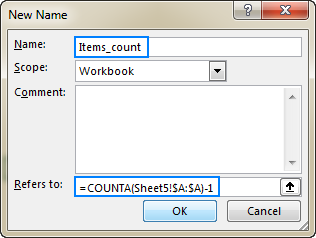



Excel Names And Named Ranges How To Define And Use In Formulas
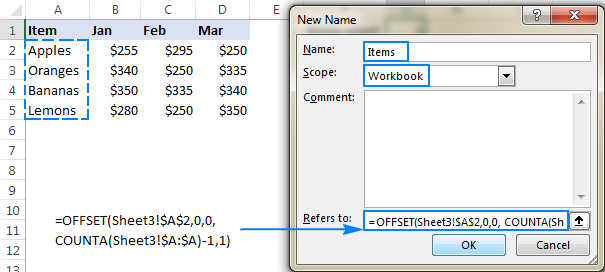



Excel Dynamic Named Range How To Create And Use
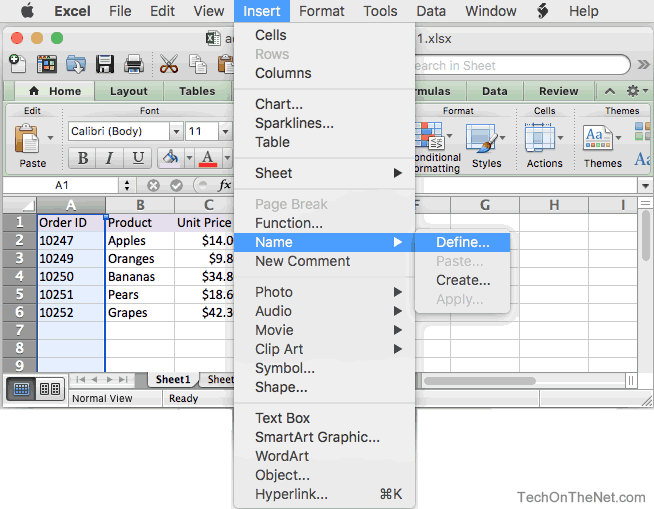



Ms Excel 11 For Mac Add A Named Range
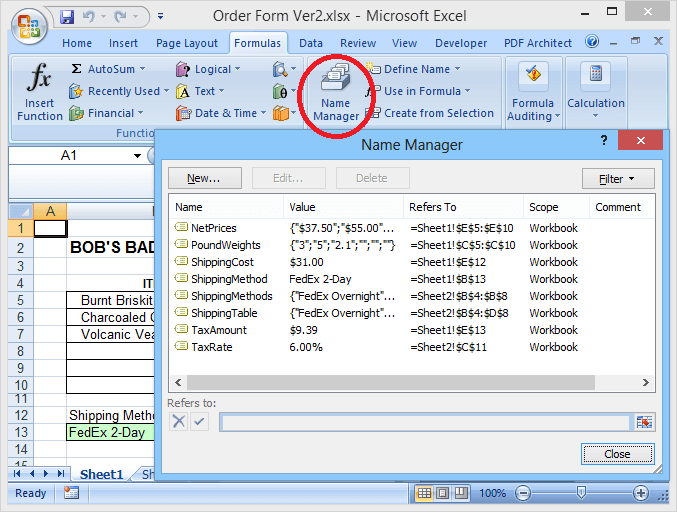



Why You Should Be Using Named Ranges In Excel
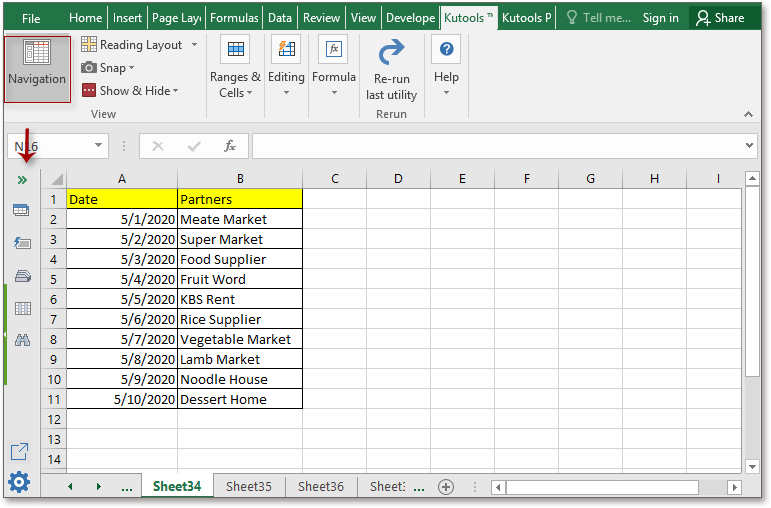



How To Find Named Range Reference In Excel
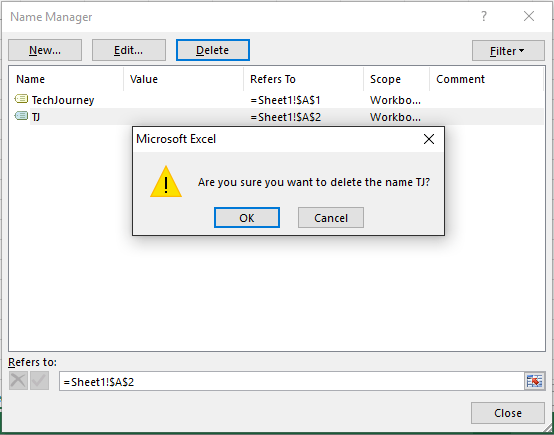



Delete A Defined Name Named Range In Excel Tech Journey
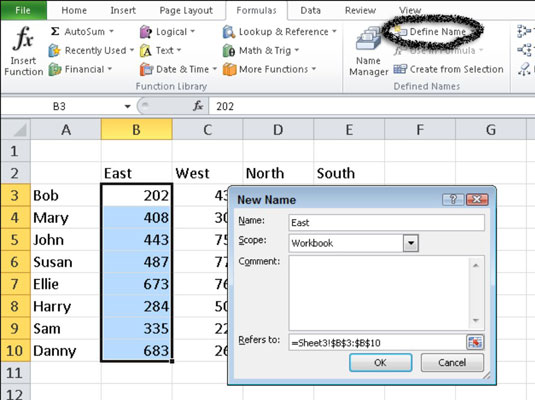



How To Name A Cell Or Range In Excel 10 Dummies
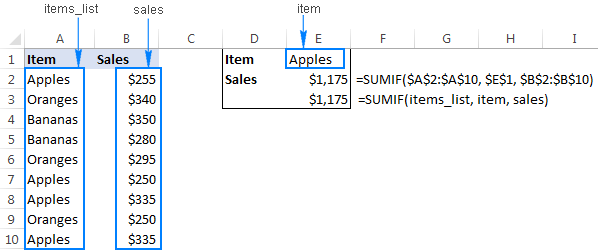



Excel Names And Named Ranges How To Define And Use In Formulas
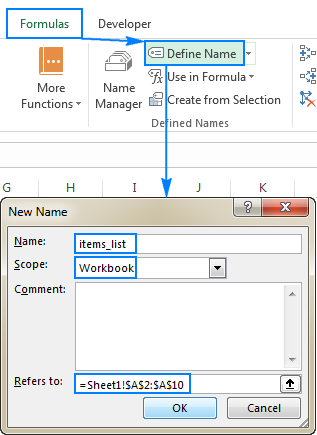



Excel Names And Named Ranges How To Define And Use In Formulas




No Name Manager In Excel Online Microsoft Tech Community
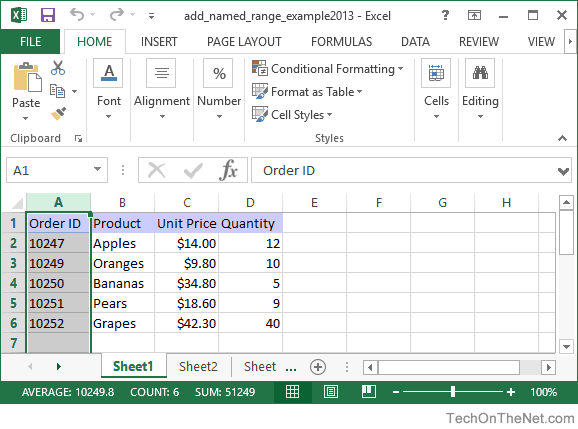



Ms Excel 13 Add A Named Range
:max_bytes(150000):strip_icc()/NamedRangeNameManager-5c192805c9e77c0001a4b91c.jpg)



How To Define And Edit A Named Range In Excel




How To Create Named Ranges In Excel A Step By Step Guide




How To Create And Use Excel Named Ranges




Create A Named Range In Excel Myexcelonline




Excel Dynamic Named Ranges Add Pwer And Punch To Excel Online Pc Learning




How To Create Named Ranges In Excel A Step By Step Guide




How To Use Name Manager In Excel Office 365 Youtube
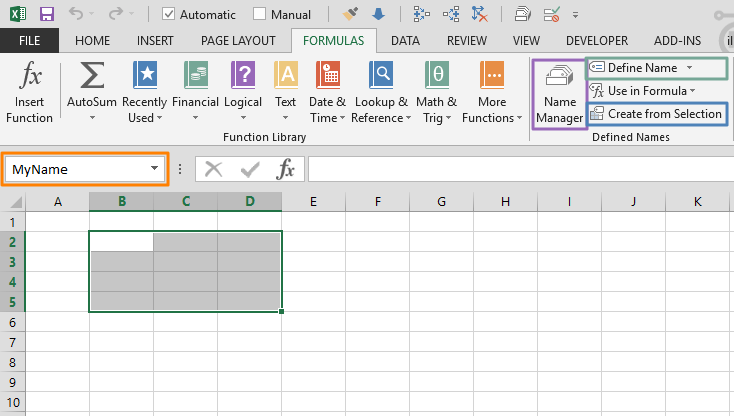



5 Ways To Create An Excel Named Range




How To See All Of The Named Cell Ranges In An Excel Workbook
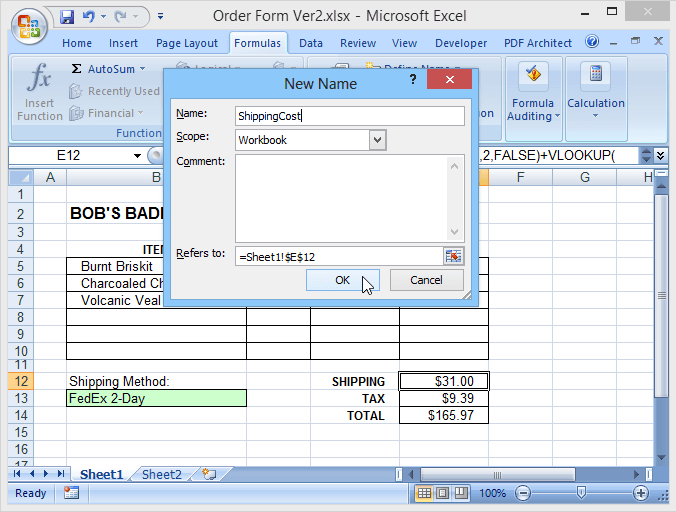



Why You Should Be Using Named Ranges In Excel




How To Find Named Range Reference In Excel




Named Range In Excel Geeksforgeeks
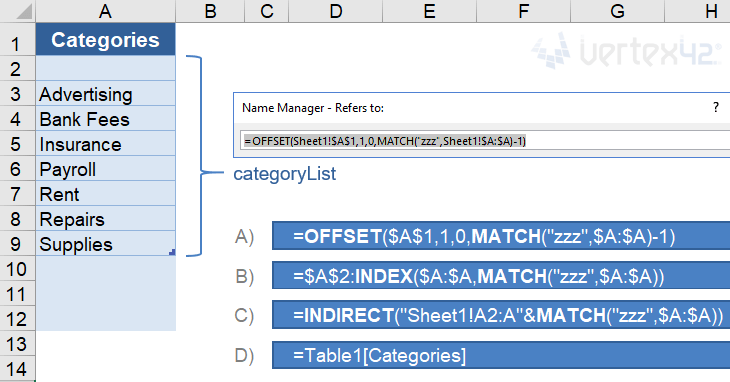



Dynamic Named Ranges In Excel




Named Ranges In Excel Exceljet
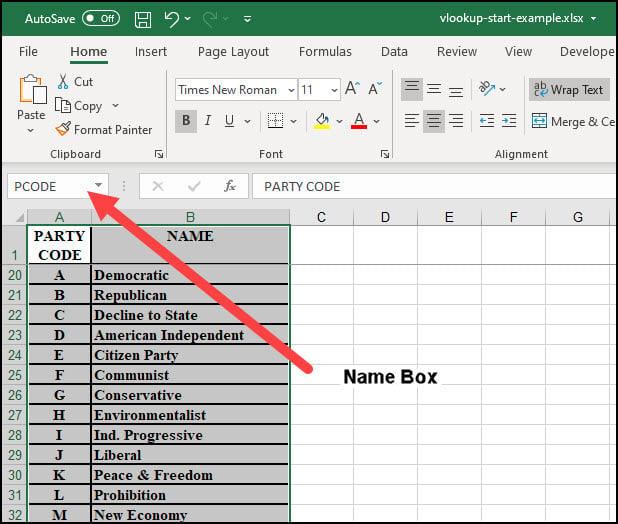



Easily Assign An Excel Range Name Productivity Portfolio
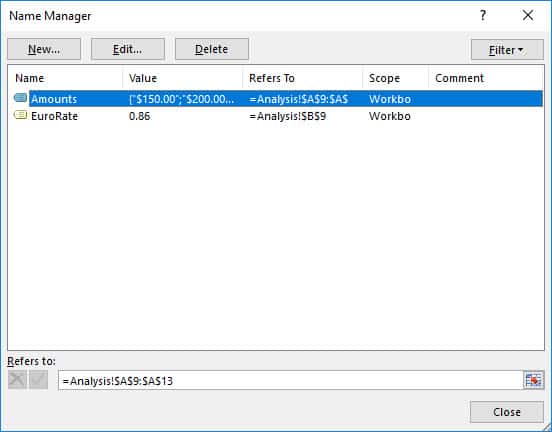



Create A Named Range In Excel Myexcelonline



Master Range Names In Excel Online Tutorial Excel Launchpad




How To Use Vlookup In Excel Online
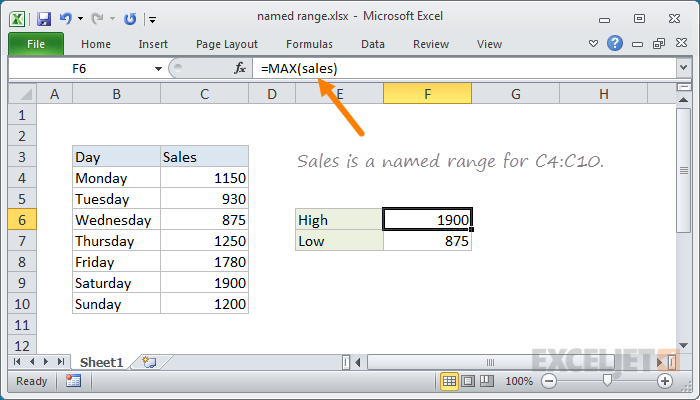



Excel Named Range Exceljet



How To Define And Edit A Named Range In Excel
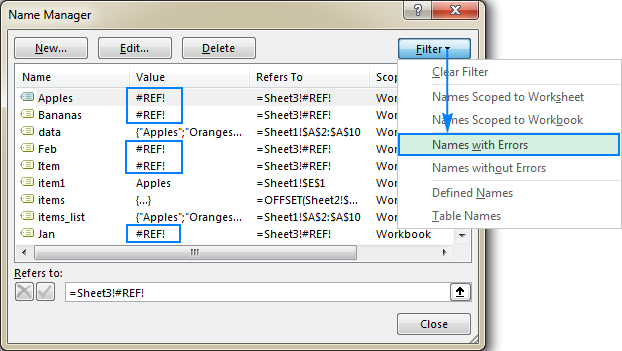



Excel Names And Named Ranges How To Define And Use In Formulas
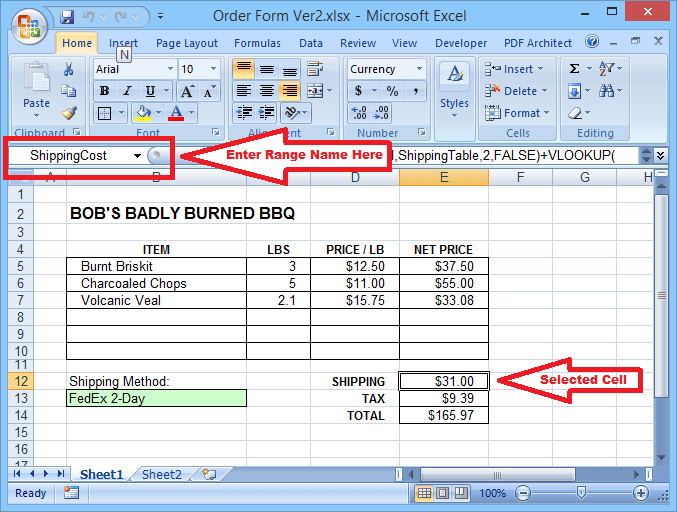



Why You Should Be Using Named Ranges In Excel




Named Range In Excel Geeksforgeeks




Named Ranges In Excel Exceljet
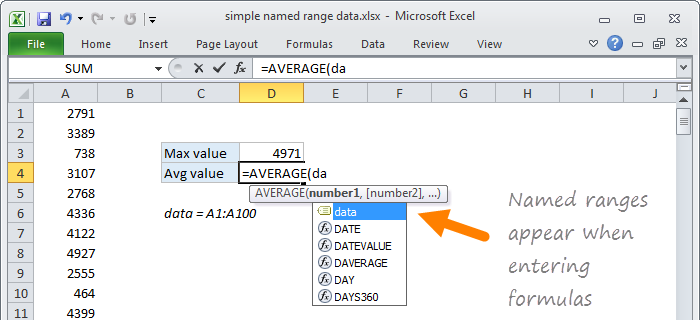



Named Ranges In Excel Exceljet
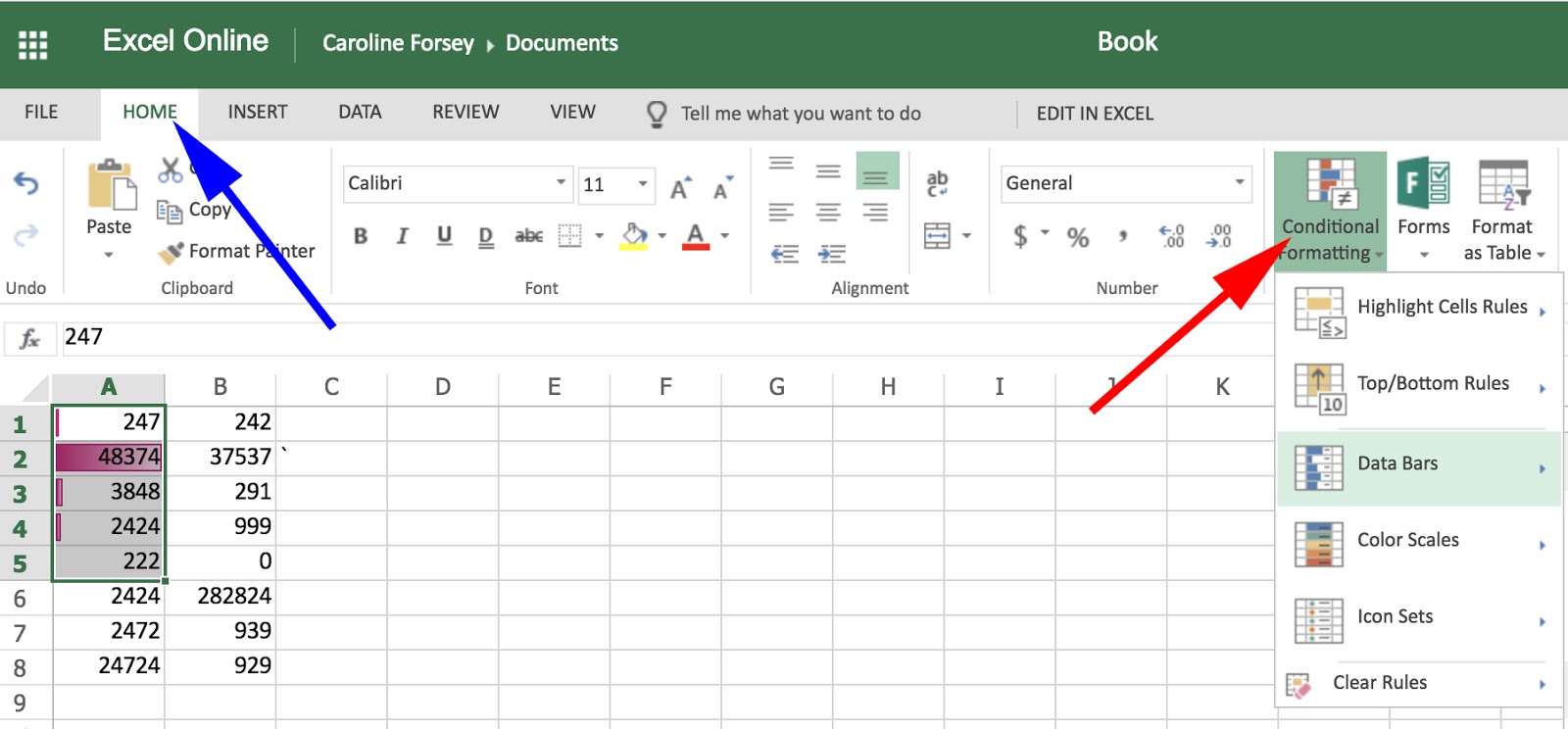



Excel Online Tips Tricks And Hidden Features You Should Know



How To Define And Edit A Named Range In Excel




Dynamic Named Ranges In Excel



How To Use Conditional Formatting In Excel Online




No Name Manager In Excel Online Microsoft Tech Community




Create A Named Range In Excel Myexcelonline
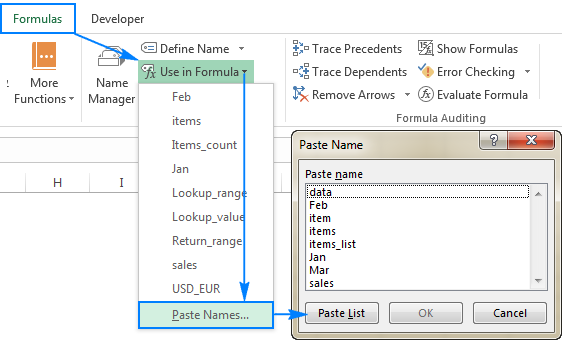



Excel Names And Named Ranges How To Define And Use In Formulas



1




Change A Named Range In Excel Youtube




The Fastest Way To Create Defined Names In Excel Mp4 Youtube




Name Cells And Ranges In Excel Youtube




Create A Named Range In Excel Easy Excel Tutorial




Named Range In Excel Geeksforgeeks




Named Ranges In Excel Exceljet




Create A Named Range In Excel Myexcelonline



0 件のコメント:
コメントを投稿